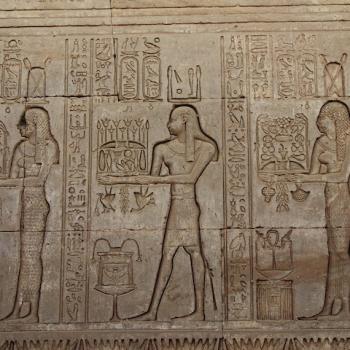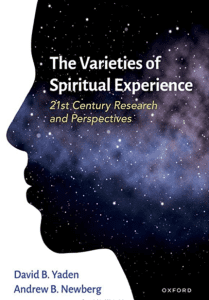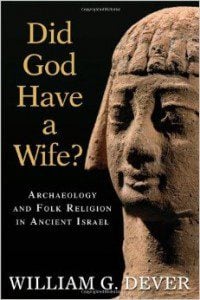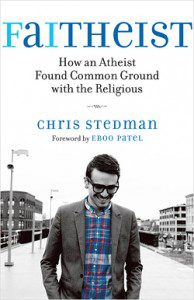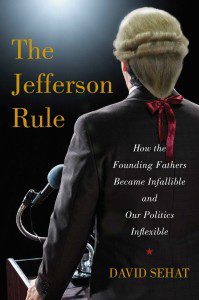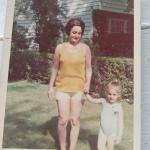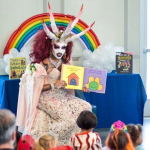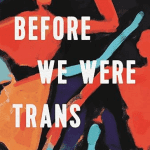This past Sunday was the 70th anniversary of the United States dropping an atomic bomb on the Japanese city of Nagasaki toward the end of World War II. The weapon, nicknamed “Fat Man,” was released at 11:01 a.m. local time, causing tens of thousands of civilian casualties. (The even more devastating bombing of Hiroshima was three days earlier.) This anniversary of the only time to date that atomic bombs have been used in warfare comes at a time when headlines are being made worldwide concerning the proposed Iran Nuclear Deal. Even as a “Child of the 80s,” we sometimes rehearsed those “duck and cover” drills in which we practiced hiding under desks in case of a nuclear attack. (Did anyone else ever think that was a stupid and fruitless exercise in case of nuclear attack?) And it would be if you were at ground zero. But my understanding is that the value of this exercise — beyond giving you something to do other than panic — is to protect people miles away from the blast site from flying shards of glass from windows breaking from the impact.) Accordingly, there are strong arguments to be made that Nuclear Nonproliferation, securing loose nuclear weapons, and decreasing the total number of nuclear weapons in the world remains one of the most pressing ethical and human rights issues of our time.
That day was also the one-year anniversary of the shooting of Michael Brown in Ferguson, Missouri, which helped galvanize the Black Lives Matter movement. Both of these anniversaries call us to rededicate ourselves to working for peace and justice. And at the confluence of these two significant dates, I would like to invite us to reflect on all the different directions in which we can feel pulled to lend our limited time, energy, and financial resources.
Either nuclear weapons or Systemic Racism is more than enough to dominate the attention of the general public and policy makers. Then, there is looming threat of global climate change. Or to use as an example the Unitarian Universalist Association-wide Congregation Study Action Initiatives from only the past decade (which themselves were winnowed down from many other competing ethical priorities), UUs are a whole have been challenged to bring our full attention and action to confronting “Escalating Inequality,” “Reproductive Justice,” “Immigration Justice,” “Ethical Eating,” and “Creating Peace.” You can likely add other items to this list of your highest concerns for creating more peace and justice in the world.
Too often, a litany of the world’s problems can lead good-hearted people to throw up our hands in despair and compassion-fatigue, which only emboldens the unjust status quo. And various advocacy groups can often end up competing with one another for attention rather than working in coalition. So I would like to invite us to take a step back from the immediacy of seeking solutions for individual issues and explore some tools that might help us navigate amidst all the conflicting concerns. In particular, I would like to explore insights from both Intersectionality Theory and the movement for Collective Liberation.
To begin with some historical context, drawn from an anthology on Intersectionality edited by Patrick Grzanka, in response to Second-wave Feminism in the 1960s (in which much of the leadership and focus was on the liberation of white woman), black women and lesbians began to advocate for the ways in the which the struggles of black women are different from the struggles of white women, as well as the ways in the which the struggles of lesbians are different from the struggles of heterosexual women. One influential turning point was the Combahee River Collective Statement of 1977 written by black lesbians. And the conversation continued to expand to consider the differences of non-Western women, Latina and Chicana women, Asian women, and women with disabilities (xvi).
A little more than a decade later in 1989, the legal scholar Kimberlé Crenshaw coined the term Intersectionality as a metaphor for developing critical theory around these diverse ethical struggles:
Consider an analogy to traffic in an intersection, coming and going in all four directions. Discrimination, like traffic through an intersection, may flow in one direction and it may flow in another. If an accident happens in an intersection, it can be caused by cars traveling from any number of directions and, sometimes, from all of them. Similarly, if a Black woman [let’s call her Sandra Bland] is harmed because she is in the intersection, her injury could result from sex discrimination or race discrimination [or often both]. (xiv)
This point can seem obvious in retrospect. But as a white dude raised in the South, it was a revelation to me
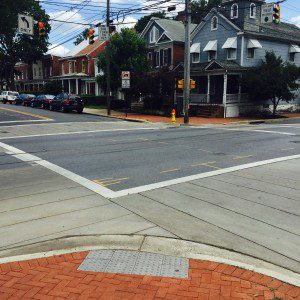
when I started reading the writings of black lesbian activists like Audre Lorde’s Sister Outsider and began to learn more about what it is like to daily experience not the triple-advantages I was accustomed to of white privilege, male privilege and heterosexual privilege, but rather the triple-oppressions of racism, sexism, and heterosexism. Perhaps most importantly, Intersectional theory challenges us to move from the level of individual prejudice to seeing the ways that racism, sexism, heterosexism, ableism, etc. are embedded in the systems, structures, and institutions of our society — and must be addressed on that systematic level.
I explored some of this Intersectional dynamic previously in a post on “Seneca Falls, Selma, Stonewall.” As you may well know, Seneca Falls is a city in New York that was the site of an important early women’s-rights convention in 1848. Selma is a city in Alabama that was the beginning point of three protest marches in 1965 for African-American voting rights, in which the nonviolent marchers were met with violent, brutal, and bloody opposition. And Stonewall, is a Greenwich Village bar in New York City, where in 1969, members of the Lesbian, Gay, Bisexual, and Transgender community rose up against the injustice of weekly police raids and launched the modern fight for LGBT rights in the U.S.
And in recent history, there are significant examples of oppressed groups choosing coalition over competition, such as in 1970 when Huey Newton, the African-American co-founder of the Black Panthers said, “When we have revolutionary conferences, rallies, and demonstrations there should be full participation of the gay liberation movement and the women’s liberation movement” (Feinberg 123). But there are also times when the Civil Rights movement was sexist, when the women’s movement was heterosexist, or other combinations thereof. For example, at the historic meeting in which Dr. King spoke resounding, prophetic words in the wake of Rosa Parks’s arrest, a number of other African American men spoke, and Rosa Parks was recognized, but she was not invited to speak, nor were any other women. As one biographer noted, “It was a male-dominated movement” (Theoharis 92-93).
Similarly, in the decade before Stonewall,
Bayard Rustin, long-time advisor and mentor in nonviolent thinking to Martin Luther King, Jr. was a gay black man responsible for several major successes of the civil rights movement…. Rustin was deeply involved with the Montgomery bus boycott and then became chief organizer of the March on Washington, for which he was featured on the cover of Life in September 1963….
But at the same time that Dr. King was writing publicly to white moderates about “Why We Can’t Wait” in regard to racial justice, King was telling Rustin privately that gay rights had to wait for racial equality to come first. Ironically, at the same time, “Pauli Murray — the first African American female Episcopal priest…and a closeted lesbian — chastised Rustin and others for their exclusion of black women from the [March on Washington’s] speakers list” (Bronski 203). Similarly, Seneca Falls, that landmark 19th-century convention of feminists, was also a gathering in which black women were conspicuously absent (Grzanka 308).
To consider two more brief examples, founder of the National Organization for Women, “Betty Friedan’s anti-lesbian sentiments were so present in NOW that a group of lesbians…formed the Lavender Menace” (Bronski 212). And often the way the story of the Stonewall riots has been told has covered-up that transgender activists played a major role in leading those riots, a bias that is sometimes called “ciswashing Stonewall” (playing on the term cisgender, which is the opposite of transgender). Intersectionality tries to learn from these lessons of history, both positive and negative, to shift our attention from competing oppressions to building coalitions. The unjust status quo benefits from keeping oppressed groups divided against one another.
In regard to building coalitions, Intersectionality can be seen as an attempt to respond to the essay by the black lesbian activist Audre Lorde titled “The Master’s Tools Will Never Dismantle the Master’s House.” Intersectionality seeks to be a new tool that calls us not to get divided into class-first, race-first, gender-first, sexuality-first, or disability-first factions. Reality is much messier and more complicated than single-issues in isolation, and so too must our work for peace and justice — if it is to move us toward achieving the Sixth UU Principle of “The goal of world community with peace, liberty, and justice for all” — account for all the intersecting crossroads. And perhaps, at minimum, that goal means building a system in which every human being has a “simple, decent place to live,” “healthy food, dynamic education, meaningful work, accessible healthcare…and infrastructure that serves people of all ages and abilities” (Crass 15).
To speak more about the “Master’s House” that must be dismantled to build a new way, bell hooks bluntly says that what justice-loving people are called to dismantle is the “White supremacist capitalist patriarchy” (Grzanka 133). Importantly, that turn of phrase (which admittedly is a mouthful to say) is parallel to what Dr. King called the three greatest threats to building the Beloved Community:
- Racism — what hooks calls “White Supremacy”,
- Materialism — what hooks calls “Capitalism,” specifically the extreme form of capitalism that only cares about increasing profit and does so through exploiting people and planet, and
- Militarism — what hooks calls “Patriarchy,” domination by force usually by a male hierarchy (Relatedly, I don’t think I’m over interpreting to say that it is significant that the atomic bombs were given the masculine/patriarchal nicknames “Fat Man” and “Little Boy.”)
Like the interlocking race/class/gender/sexuality/ability concerns of Intersectionality, these “Triple Threats” to building the Beloved Community are also mutually-reinforcing oppressions.
To approach this subject from another perspective and share some about where I find myself admidst these struggles, suffice it to say that in the theologically-conservative church of my childhood, I didn’t hear much about dismantling the White Supremacist, Capitalist Patriarchy. Instead the focus was much less on solving the social problems of this world and much more on saving people’s souls for the next world. The message I received was that the world would be a better place if all our missionaries were successful and the whole world became not merely Christians, but specifically Southern Baptists. I also grew up listening to Rush Limbaugh, one of those personifications of the White Supremacist, Capitalist Patriarchy.
So, when I first became involved with anti-racism work, part of my reaction was classic “white liberal guilt” as I learned about white privilege contrasted with the racism people of color face daily. Over time, however, I came to see that guilt just makes you feel bad individually, but doesn’t advance the struggle for freedom, although it can be a helpful temporary starting point of awakening to justice causes. One turning point for me was the insight that, “Loss of privilege is not reverse discrimination.” And as I have continued to move into the struggle for Collective Liberation, my motivation is not to alleviate white guilt — because that won’t get you very far and will likely leave you resentful. Rather, I’ve come to find that advocating for justice for all is intrinsically rewarding. I’ve come to find my own humanity expanded through celebrating diversity (which is very different from tolerating diversity). And I’ve found a deep beauty in opening my heart in compassion not only for people like me, but also for all of humanity (Crass 267). That’s what it means to existentially experience the UU Seventh Principle: “The interdependent web of all existence.”
In contrast, to consider recent headlines where I live in Frederick County over whether to repeal an English-only language ordinance passed in 2012, let me speak for myself as someone who recently bought a house in downtown Frederick, in saying that I did not invest longterm in Frederick to be part of a County that is xenophobic and seeking to re-entrench the White Supremacist, Capitalist Patriarchy. I seek to be part of building for a future for Frederick County and beyond that celebrates diversity, embraces freedom, and extends hospitality to all.
And I will restrain myself from listing all the ways, historically, that the United States has never been an English-only country. Instead, let me say that the lessons of Intersectionality and Collective Liberation — as well as logic and science! — tell us that diversity is essential for a healthy ecosystem, and knowing more than one language is good for your brain. (If we want to compete globally, perhaps what we should ban is people trying to limit others to English-only!) Indeed, one reason I am a Unitarian Universalist minister is that I think being a “Big Tent” movement that draws wisdom from Six diverse sources is essential for making sense of the globalized, pluralistic world in which we find ourselves.
The opposite of that alive, engaged, connected feeling of being part of the “interdependent web of all existence” is a fear-based, isolated individualism of only male voices, speaking in English-only, and in which the perception is that problems can only be solved through violence. (To give you my armchair diagnosis of the American psyche, it is no coincidence that Donald Trump continues to be popular with a minority of voters despite all the incredibly racist and sexist things he says. In a world in which a black man named Barack Hussein Obama has been elected president twice, a woman is a serious contender to be the next president, and the Black Lives Matter movement is rising up against a racist criminal justice system, Trump is another literal personification of the White Supremacist Capitalist Patriarchy trying desperately to resist a changing world.
But in the words of one Intersectionality theorist, “‘difference’ is just another world for being human” (Grzanka 299). And when we repress our differences, we deny our humanity, and we deny the humanity of others. As someone who was born into the White Supremacist, Capitalist Patriarchy, I would add that from within that worldview, there is so much pressure to conform, fit in, and repress differences. There’s a lot more fun and freedom over here at the intersection of Collective Liberation!
There is so much more to say, but to briefly address some potential next steps, Chris Crass, a long-time activist, has written about twenty best practices he has learned in his work for Collective Liberation. I’ll share just five excerpts as starting points:
1. Read female activist writers such as Audre Lorde, Gloria Anzaldúa, Suzanne Pharr, Angela Davis, Barbara Smith, and Elizabeth ‘Betita’ Martínez.
2. Study social movements and organizing experiences led by women, from Ida B. Wells and Abby Kelley to Septima Clark and Ai-Jen Poo. [That these writers aren’t household name is another sign of the ways our world is shaped by the White Supremacist, Capitalist Patriarchy — and the ways in which far too many people are never assigned to read the perspective of people of color, the poor, women, differently-abled, and gender-nonconforming writers.]
3. Learn about current struggles in your community. Look for opportunities to get involved and support these efforts. (It is important to support and respect the existing leadership of these struggles, rather than come in thinking you’re going to take over.)
4. Practice noticing who’s in the room at meetings and events. How many women? How many transgender people? How many people of color? What are people’s class backgrounds?
5. Be aware of ways you might think you are always needed. Struggle with the saying, “You will be needed in the movement when you realize that you are not needed in the movement.” (Crass 143-149)
The invitation is to participate in a spirit of collaboration and cooperation across all the differences that make us human.
The Rev. Dr. Carl Gregg is a trained spiritual director, a D.Min. graduate of San Francisco Theological Seminary, and the minister of the Unitarian Universalist Congregation of Frederick, Maryland. Follow him on Facebook (facebook.com/carlgregg) and Twitter (@carlgregg).
Learn more about Unitarian Universalism:
http://www.uua.org/beliefs/principles






